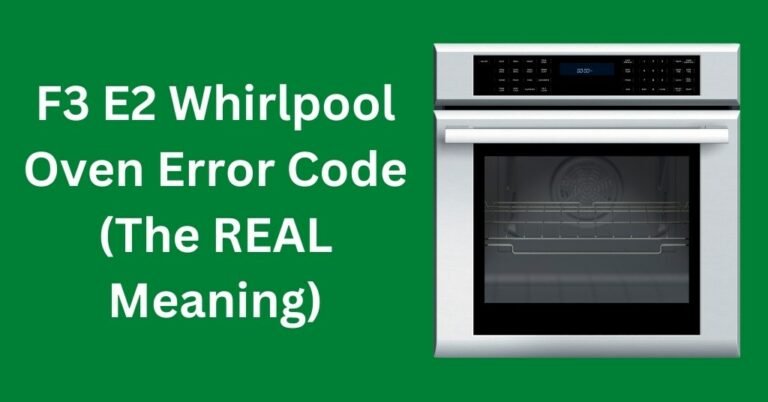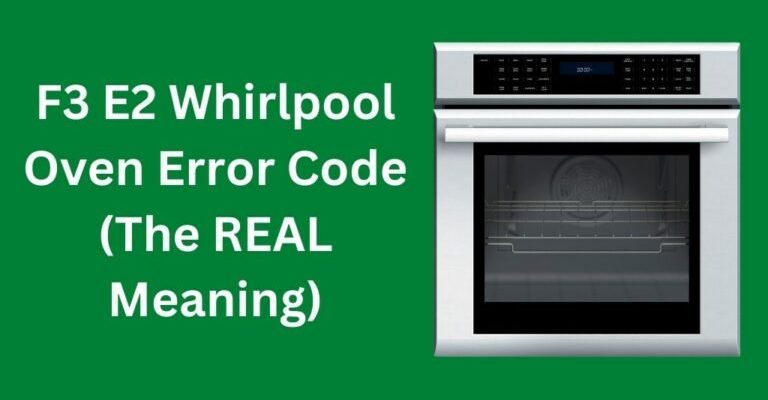
You see, when your oven or range flashes an error code like E2, it’s essentially trying to communicate with you, letting you know there’s a small hiccup that needs attention. It’s kind of like your car’s check engine light. Getting to the bottom of it doesn’t require a degree in appliance repair, just a bit of patience and a willingness to learn. Together, we’ll explore what E2 means and how you can handle it without breaking a sweat.
Understanding the Error Code E2
Alright, so what exactly is this E2 error code trying to say? In simple terms, the E2 code in Whirlpool ovens and ranges typically points to a problem with the appliance’s temperature sensor or the associated circuitry. Think of it this way: the sensor acts like your oven’s thermometer. Just as an inaccurate thermometer can lead to unevenly cooked meals, a faulty temperature sensor can result in your Whirlpool appliance not heating or cooking properly.
When this sensor goes on the fritz, it often triggers the E2 error code. Interestingly, this might happen if the sensor is disconnected, malfunctioning, or if there’s an issue with the wiring connecting the sensor to the control board. Imagine a loose headphone jack causing your favorite tunes to cut in and out – it’s sort of the same idea in terms of connectivity and signal issues.
The trickiest part? This sensor can be a bit delicate. If the wiring has experienced wear and tear or if the connections have become loose over time, your oven might not be able to get a reliable reading. Thankfully, checking and addressing these connections can sometimes solve the problem.
Common Causes for the E2 Error
So you’re dealing with an E2 error, but what’s causing it? The root of the trouble usually lies in a few key areas. First up is the temperature sensor itself. Over time, this sensor can fail, either due to age or because of exposure to high temperatures. It’s a bit like leaving your phone out in the hot sun for too long – eventually, it just stops working right.
Then there’s the wiring. Your oven’s internal wiring can sometimes experience issues like fraying or becoming loose. This can happen due to the natural wear and tear of frequent usage. If the wiring that connects the sensor to your oven’s control board isn’t solid, it can cause miscommunications that lead to error codes like E2. Imagine trying to have a conversation over a phone with spotty service; that’s essentially what’s happening inside your appliance.
Lastly, consider the control board. Rarely, but sometimes, the actual board that manages all the commands and reads signals from the sensor might be malfunctioning. While it’s less common, a glitchy control board might misread inputs and throw out an E2 error as a result.
How to Troubleshoot the E2 Error Code
Now that you know what might be causing the E2 error, let’s get into how you can fix it. First things first, always ensure your appliance is unplugged before you begin examining any internal components. Safety is crucial – just like you’d never work on your car’s engine while it’s running, the same goes for appliances.
Start with the temperature sensor. Locate it in your appliance – usually at the back of the oven – and check its connection. If it looks loose or disconnected, try reconnecting it securely. Sometimes this simple step can clear the error. If the sensor appears damaged, it might need replacing. Replacing a sensor is a bit like switching out a bad light bulb – it’s a straightforward fix once you have the correct part.
If the sensor seems fine, inspect the wiring. Look for any obvious signs of wear or damage. If you spot problems, you might need a professional to handle repairs, especially if you’re not comfortable working with electrical components.
Should the error persist despite your efforts, the control board might be to blame. In this case, consulting with a professional technician could save time and prevent further frustration. They have the tools and expertise to assess whether the board is working correctly.
Preventing Future E2 Errors
To avoid running into the E2 error again, regular maintenance of your oven and range is a good idea. It’s a bit like taking your car for routine check-ups to avoid breakdowns. Ensure that any repairs or replacements are done with genuine Whirlpool parts, and don’t hesitate to schedule regular inspections.
Keeping your appliance free from spills and build-ups can also help. Much like you’d clean the lint out of a dryer or debris from a dishwasher, maintaining a clean oven can prevent potential issues caused by dirt and grime interfering with its components.
If you ever feel out of your depth, remember that reaching out to Whirlpool’s customer service or a certified technician is always a wise choice. Not only can they offer assistance tailored to your specific appliance model, but they’ll also ensure that your oven or range is back to running smoothly, letting you get back to the joy of cooking without a hitch.
